Easy Fruits That Can Grow Garden Center
It is a joy to harvest fruit grown from your own fruit trees at home. When it comes to growing fruit trees and fruiting plants many gardeners can be either intimidated or out of their comfort zone. The biggest challenge for the home gardener usually comes down to pruning and summer maintenance of fruiting plants. I have compiled a list of cultivars that I believe are the easiest for the home Gardener in terms of pruning, spraying, and low maintenance.
Blueberries:
Blueberries are one of the lowest maintenance plants a home gardener can add to their 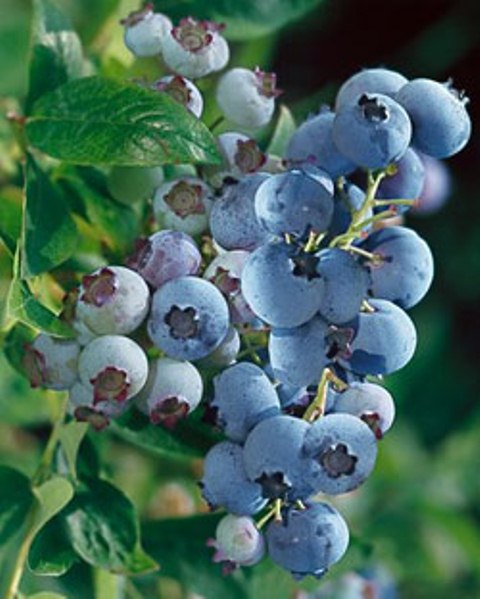 landscape. Blueberry plants have little to no disease or insect issues. They will grow to a height of 8-10 ft tall with a 3-4' spread. The home gardener can hedge the plants back to control the height if desired. Plant spacing should be 4-6' apart, in full sun with well drained soil. Blueberry plants like a pH in the 4.5 range. If your pH needs to be corrected you can add peat moss in the hole when planting your blueberries then mulch with pine straw. In the summer the plants are graced with plump, juicy, fruit and the fall will add striking color to your landscape. They can be planted as a hedge or grouped in an island similar to the way azaleas and roses are. Blueberry plants are partially self-fertile but will produce more fruit when planted with another variety. Pruning simply involves a light hedging in mid-winter, and removing any interior branches that are crossing one another.
landscape. Blueberry plants have little to no disease or insect issues. They will grow to a height of 8-10 ft tall with a 3-4' spread. The home gardener can hedge the plants back to control the height if desired. Plant spacing should be 4-6' apart, in full sun with well drained soil. Blueberry plants like a pH in the 4.5 range. If your pH needs to be corrected you can add peat moss in the hole when planting your blueberries then mulch with pine straw. In the summer the plants are graced with plump, juicy, fruit and the fall will add striking color to your landscape. They can be planted as a hedge or grouped in an island similar to the way azaleas and roses are. Blueberry plants are partially self-fertile but will produce more fruit when planted with another variety. Pruning simply involves a light hedging in mid-winter, and removing any interior branches that are crossing one another.
Figs:
Figs are a traditional southern fruit that is easy to gro. Fig trees (bushes) have little to no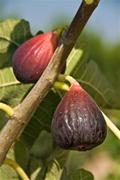 disease or insect issues. Fig trees can grow as tall as 10-12' tall with a 10-12' spread. The home gardener can control the height by cutting the tops out of the tree which will lead to more lateral branching. Figs are tolerant of most soil types but grow best in a deep clay loam soil. Figs like a pH in the 6's and a heavy layer of mulch. Figs produce best with little or no pruning, however branch thinning is recommended to prevent the accumulation of dense unproductive twig growth. Figs ripen in late summer/early fall and are a beautiful addition to your landscape. Figs are self-fruitful. Try growing this fruit tree to see how easy and delicious it really is.
disease or insect issues. Fig trees can grow as tall as 10-12' tall with a 10-12' spread. The home gardener can control the height by cutting the tops out of the tree which will lead to more lateral branching. Figs are tolerant of most soil types but grow best in a deep clay loam soil. Figs like a pH in the 6's and a heavy layer of mulch. Figs produce best with little or no pruning, however branch thinning is recommended to prevent the accumulation of dense unproductive twig growth. Figs ripen in late summer/early fall and are a beautiful addition to your landscape. Figs are self-fruitful. Try growing this fruit tree to see how easy and delicious it really is.
Pomegranates:
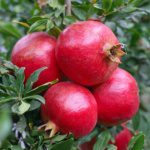 Pomegranates are steeped in history and are one of my favorite fall fruits. Pomegranate trees have little to no disease or insect issues. They grow to a height of 8-10 ft tall with a spread of about 6 ft. The home gardener can control the height of the tree and the spread by hedging back mid-summer and again in the winter months. Pomegranates prefer a more alkaline soil and will grow best in amended soils using a soil conditioner or peat moss. In the early years of planting we recommend pruning the bush to 1/2 of its original height the first 2 winters to promote a strong framework and discourage straggly branches. After the first couple of years the only pruning required will be the removal of low branching and the removal of dead branches. Pomegranates are a self-fruitful fruit tree.
Pomegranates are steeped in history and are one of my favorite fall fruits. Pomegranate trees have little to no disease or insect issues. They grow to a height of 8-10 ft tall with a spread of about 6 ft. The home gardener can control the height of the tree and the spread by hedging back mid-summer and again in the winter months. Pomegranates prefer a more alkaline soil and will grow best in amended soils using a soil conditioner or peat moss. In the early years of planting we recommend pruning the bush to 1/2 of its original height the first 2 winters to promote a strong framework and discourage straggly branches. After the first couple of years the only pruning required will be the removal of low branching and the removal of dead branches. Pomegranates are a self-fruitful fruit tree.
Persimmons:
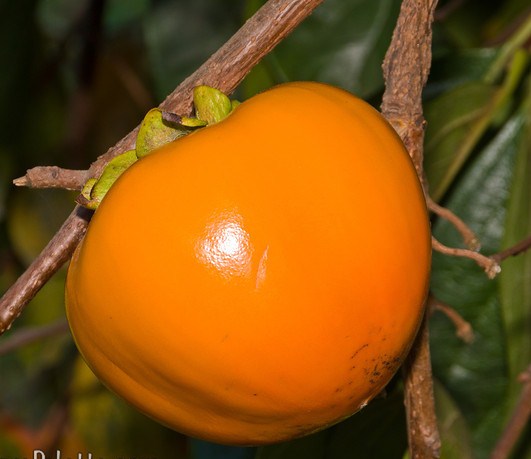 Persimmon trees were first introduced into the United States in the 19th Century. There are little or no disease or insect issues on the plant. They will grow to a height of 12-15' tall with a spread of 6-8'. The home gardener can control the height and spread of the tree by pruning mid-summer and again in the winter months. Persimmons prefer a soil pH of 6.0-6.5, well drained and fertile. They can tolerate many different soil types but need it well drained and in full sun. As the tree matures, any branches that cross over one another should be removed allowing adequate sunlight and air penetration through the canopy. Persimmon trees live a very long time and make a nice landscape tree. Their beautiful fall color and decorative fruit make a nice addition to any landscape.
Persimmon trees were first introduced into the United States in the 19th Century. There are little or no disease or insect issues on the plant. They will grow to a height of 12-15' tall with a spread of 6-8'. The home gardener can control the height and spread of the tree by pruning mid-summer and again in the winter months. Persimmons prefer a soil pH of 6.0-6.5, well drained and fertile. They can tolerate many different soil types but need it well drained and in full sun. As the tree matures, any branches that cross over one another should be removed allowing adequate sunlight and air penetration through the canopy. Persimmon trees live a very long time and make a nice landscape tree. Their beautiful fall color and decorative fruit make a nice addition to any landscape.
Muscadines:
Muscadines are a native plant to the southeast and have little or no disease/insect issues.  They love our heat and humidity. Muscadines prefer a pH in the 6's, and like a well drained soil in full sun . Muscadines do require a wire trellis or an arbor to grow up and down on. The first year there is simple pruning involved to direct the growth up and down the wire. Once the framework is established, a winter pruning is necessary to ensure proper fruit set. Muscadines ripen late summer and early fall. The aroma is sure to attract anyone to their location in the garden. An arbor makes a stunning display in any landscape.
They love our heat and humidity. Muscadines prefer a pH in the 6's, and like a well drained soil in full sun . Muscadines do require a wire trellis or an arbor to grow up and down on. The first year there is simple pruning involved to direct the growth up and down the wire. Once the framework is established, a winter pruning is necessary to ensure proper fruit set. Muscadines ripen late summer and early fall. The aroma is sure to attract anyone to their location in the garden. An arbor makes a stunning display in any landscape.
Blackberries:
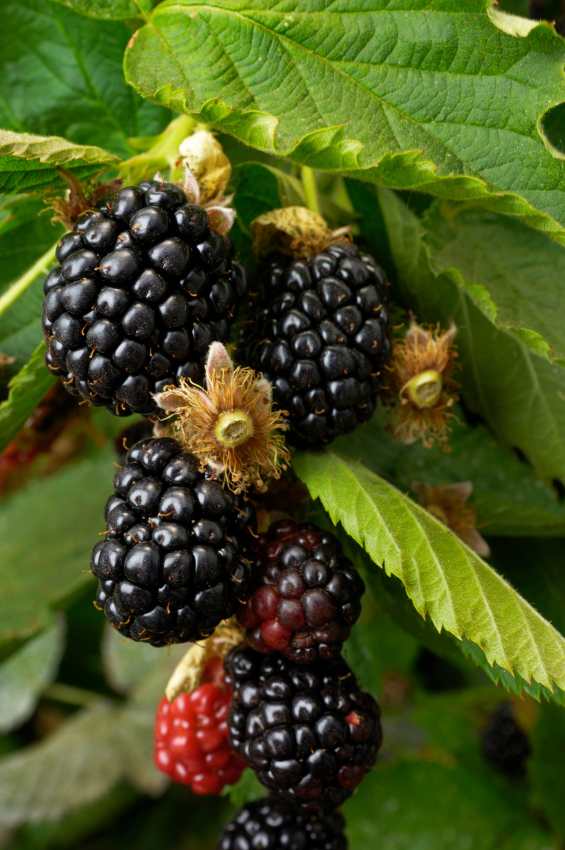 Blackberries can be easily grown and require very little space in the garden. They have few disease or insect issues on the plants. Blackberries are tolerant to a wide variety of soil types, they prefer well drained, sandy loam, and a pH in the 6's. Blackberries produce their crop on the last seasons growth. Once the cane has produced and begins dying back, the cane should be removed and discarded to help reduce disease pressure. Once the old woody canes have been removed, only the vigorous new growth will be remaining. Once the new growth reaches 48-60 inches in height, the canes should be tipped to encourage branching. Plant spacing should be 3-4 ft apart, and average yield would be 1-2 gallons per plant. Delicious
Blackberries can be easily grown and require very little space in the garden. They have few disease or insect issues on the plants. Blackberries are tolerant to a wide variety of soil types, they prefer well drained, sandy loam, and a pH in the 6's. Blackberries produce their crop on the last seasons growth. Once the cane has produced and begins dying back, the cane should be removed and discarded to help reduce disease pressure. Once the old woody canes have been removed, only the vigorous new growth will be remaining. Once the new growth reaches 48-60 inches in height, the canes should be tipped to encourage branching. Plant spacing should be 3-4 ft apart, and average yield would be 1-2 gallons per plant. Delicious
Jujube's:
Jujube's are commonly called the Chinese date. It is an exotic fruit that grows well in most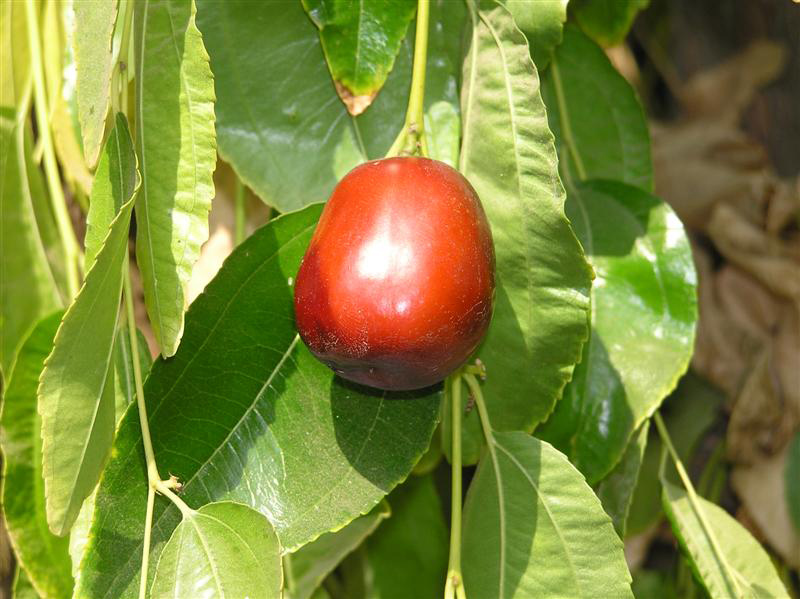 areas of the South. They have little or no disease or insect issues. Jujubes are a nice landscape fruit however most varieties have a few thorns on the tree. Jujubes are adapted to a wide range of soil types and prefer a pH in the 6's. When eaten fresh the jujube is like a sweet, dry apple. The fruit is about the size of a date and are best eaten when the fruit is half green. Jujubes ripen in the fall. Try this exotic fruit tree. You will be glad you did.
areas of the South. They have little or no disease or insect issues. Jujubes are a nice landscape fruit however most varieties have a few thorns on the tree. Jujubes are adapted to a wide range of soil types and prefer a pH in the 6's. When eaten fresh the jujube is like a sweet, dry apple. The fruit is about the size of a date and are best eaten when the fruit is half green. Jujubes ripen in the fall. Try this exotic fruit tree. You will be glad you did.
In my opinion these are the best options for growers who want to grow fruit organically and have little disease or insect issues. All of these selections will add beauty and interest to any garden and will only require minimal maintenance. We hope you have room in your landscape to add one of these great cultivars to your garden.
We are shipping fruit trees, berry plants, nut trees and grapevines now through April.
We have a great inventory this year and the plants are beautiful! Order yours today.
Keep Growing,
Greg Ison
ison@isons.com
Source: https://www.isons.com/the-easiest-fruiting-plants-to-grow-in-your-home-garden/